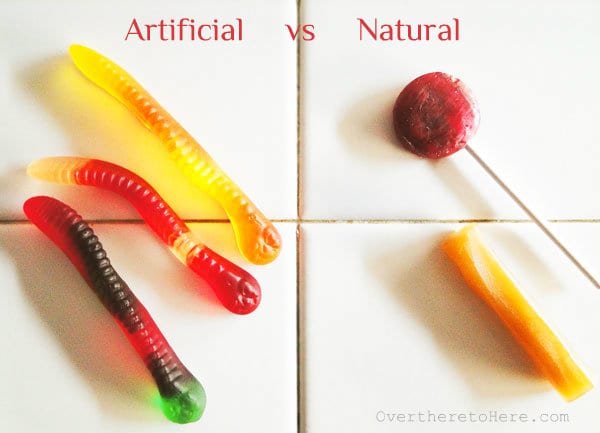
What do you think of artificial vs natural food colors in candy – or sweets as the British say?
Well, what would be your reaction if you bought a bag of candy and the packaging had this warning?
“may have an adverse effect on activity and attention in children.”
Yes, most candy sold in the USA would by law have this warning if it was sold in Britain or in the European Union.
For me it’s a nightmare every time I try to buy some sugary sweets in the States. It’s bad enough trying to find food without High Fructose Corn Syrup (aaargh that’s another ingredient that gets my blood boiling!) but I also have to avoid any treats, sweets, snacks or meals containing what in Britain are considered neurotoxic food dyes. Too often I look at the list of ingredients and what do I see: RED 40, YELLOW 5, YELLOW 6 and so on.
Artificial vs Natural food colors? UK vs USA?
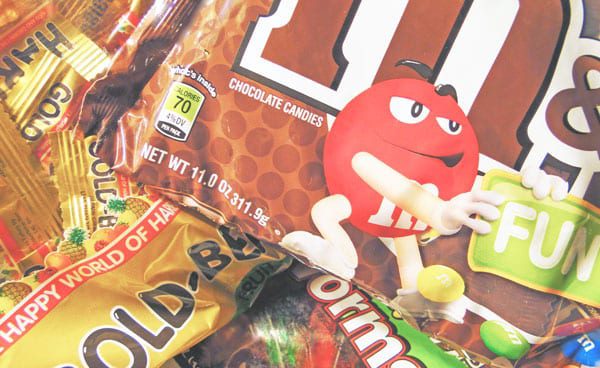
Britain is trying to encourage food manufacturers not to use common artificial food dyes but to find natural alternatives. They’ve put out a list of six artificial food colorings that should be avoided. In fact in the UK – and in the European Union – any food that contains any of these six artificial colors must have that same warning label:
“may have an adverse effect on activity and attention in children.”
The artificial food colors known in the States as Red 40, Yellow 5 and Yellow 6 are included in this UK and EU no-no list.
In the UK and EU the same rule applies to drinks unless they contain more than 1.2% alchohol.
Research funded by the FSA (Food Standards Agency) in the UK suggested that that there was a link between hyperactivity and food colors in some children. Findings from this University of Southampton study carried out between September 2004 and March 2007 indicated that artificial colors and petroleum based preservatives “had adverse effects on the hyperactive behavior of some children.” And it wasn’t just looking at children who had ADHD (Attention Deficit Hyperactivity Disorder). This study followed up earlier research which first started ringing warning bells about the effect of artificial vs natural food additives on kids.
The FDA (Food and Drug Administration) in the US had a look at the Southampton Study and decided the artificial dyes were okay. As far as they were concerned it didn’t affect children in general but could be a problem for kids with ADHD or other “problem behaviors.”
Oh and by the way, according to the CDC (Center for Disease Control and Prevention), the American Psychiatric Association says that 3 to 7% of school aged children in the US have ADHD but other studies indicate it could be higher.
When it comes to artificial vs natural food colors, British supermarkets realized it wouldn’t be a good idea and banned it from their own brand products. Wholefoods also does not sell any food containing artificial colors (nor High Fructose Corn Syrup) in any of their stores.
Candy should be a treat not a minefield
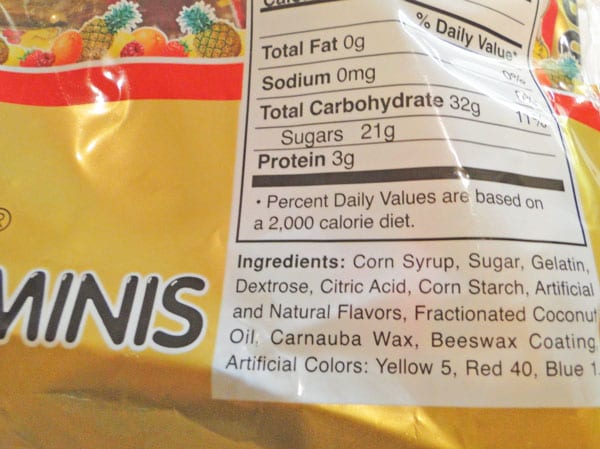
Haribo is a German company and their candy is hugely popular in Britain. Safe to buy here in the US? That’s what I recently assumed. Foolish me. I looked at their ingredients when I came home and there they were: Yellow 5, Red 40, Blue 1. Naturally (actually unnaturally) the Haribo candy for the American market contains artificial food colorings.
But the Haribo European website proudly declares that the colors in their candy are made with pure natural products for more than two decades: “Since the end of the eighties, HARIBO products have obtained their colourful appearance as a result of the use of fruit and plant extract concentrates. Mixtures containing fruit preparations such as blackcurrants, oranges, lemons, elderberries, red currants, chokeberry, grape, spinach, nettle, passion fruit, mango, carrots, kiwi and apple produce the necessary colours.”
In UK my kids eat Smarties sometimes – they’re just like M&Ms – orginally made by a British company and now owned by Nestle. They come in eight different colors but contain no artificial colors or flavors. M&Ms here in the US include Blue 1 Lake, Red 40 Lake, Yellow 6, Yellow 5, Red 40, Blue 1, Blue 2 Lake, Yellow 6 Lake, Yellow 5 Lake, and Blue 2. OMG!
The Center for Science in the Public Interest is campaigning in the US to eliminate color dyes in food. One of their targets is M&Ms.
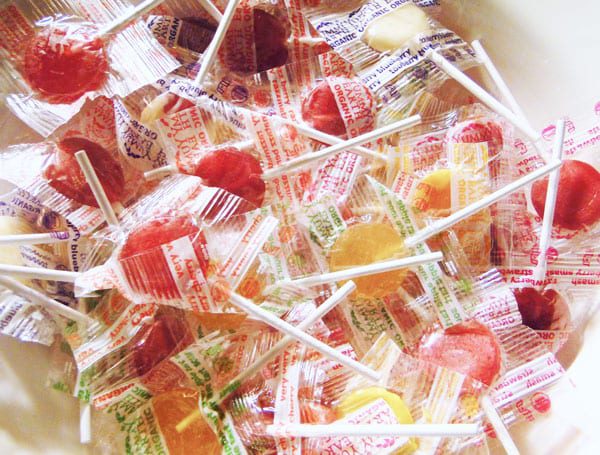
What makes me angry is that I find it so difficult buying any candy in the USA that contain natural ingredients. I don’t buy candy – sweets – very often but I personally don’t think you can deny kids candy completely. I try and teach my children why I won’t let them touch most American candy. I get my husband to bring back British sweets when he goes to London on business. And luckily I did find a brand called YumEarth Organics which sells lollilops made with real fruit extracts. An Australian brand of licorice is also sold in American supermarkets that uses natural flavors and ingredients. They use a spinach extract as coloring in their green apple version. Some natural food stores also sell candy without the toxins but I find the choice limited and expensive.
So when it comes to the question artificial vs natural food colors, I think it’s pretty clear what my answer is – what about you?
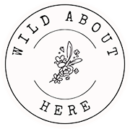
That is totally appalling. I do buy sweets for my guys, but only those which are labelled as no artificial colourings or preservatives. I didn’t realise there was such a huge difference in labelling in two countries
Wow, I had no idea of differences between US and UK/EU on labelling of sweets and use of colourings. Scary stuff.
I do love Haribos! But I am trying to cut down and eat more natural snacks! When my girls were little, sweets were a treat once a week. 🙂
I’m surprised the UK is so different from the US. With a culture that is much more litigious than ours here in the UK you’d think the manufacturers would want to take the safest option. GG
As long as the US FDA (Food and Drug Administration) says it’s okay they’re safe I suppose.
This really is such a minefield of an issue. I am really careful about what I give Grace but this post really helps to make things much clearer. Thanks for linking to PoCoLo x
I’ve just started searching for anything that says ‘natural’ and double check the labels since moving here.
We only have sweets now and again but POD is only young. Always amazes me how the same brand can be so different from country to country. Must be so confusing!
I’m so worried now, when I found brands i recognised from England I bought them here in Canada assuming they were the same but having read this I’m pretty sure ours will be the same as the US. Makes me wonder what the hell the kids have been eating for the last 2 years that I didn’t realise. I’m off to check the contents of my kitchen! thanks for the ‘heads up’
I did the same!! I think the problem is that it’s cheaper for companies to use High Fructose Corn Syrup and artificial e colours if they can get away with it.
This is such an interesting article on the difference between US and British labeling of sweets. It’s a shame the US don’t provide more natural alternatives for children.
I’m hoping that eventually there will be pressure to change. Shame that the US FDA isn’t trying to help and change it unlike the UK’s FSA. The UK FSA website even lists all the companies and supermarkets who are making food without artificial additives and colours.
I think that sweets are fine now and again. Would be good if they would find better alternatives to those artificial colours.
You can’t deny kids sweets completely (nor me! 😉 ) Haribo in Europe uses all natural flavours and colours so it def is possible.
I would love to see the US follow in the footsteps of the UK and band those artificial food colors used in candy. I believe candy should be a special treat and not an everyday food group. Thanks for bringing this subject into the spotlight. Hopefully, we will begin to see change. I did notice that Kraft is remaking it’s Mac & Cheese in order to eliminate the yellow food coloring.
I agree with you Alli. I think Kraft and a couple other companies are beginning to get rid of some of the food colors after pressure from some groups. Hopefully more will follow.
Wow – this is pretty scary. It must be so annoying to have to check the labels all the time. Really appreciate UK/Europe now 🙂
It’s scary for me after UK/Europe although now there are groups trying to push for changes here especially when it comes to kids food.
I avoid High Fructose Corn Syrup completely (or at least try to!) but I haven’t been checking for colours too… I’m firmly in the everything in moderation camp, but there are definite exceptions to that. It’s so much more difficult here than it was in the UK! #PoCoLo
I’m the same as you and avoid High Fructose Corn Syrup. I was just amazed, though, when I discovered that they also put all the E colours into everything as well. Definitely agree it was easier food shopping in UK. We also don’t have any Wholefoods anywhere near us where I can feel safe about what food I’m buying for my kids even if it’s more expensive.
Wow, this is scary to read. I am in the UK but need to pay more attention to the back of the packets. I also need to cut down in general. I was fed a lot of sweets as a kid, I am now totally addicted to sugar. Trying to prevent that happening to my own children.
I like to give my kids sweets once in a while but because of the ingredients here in the US I have really had to check the labels before I buy them anything.
That surprises me a lot a most of our big name supermarkets are importing and selling (for an extortionate price) American candy, cereals etc. There are also a large amount of American ‘candy’ stores and stalls popping up all over the place, again at extortionate prices. I have to admit I love all the American Candy, but don’t think after reading this I’ll be treating the tiny 3 to it anytime soon.
Once in the while it’s okay but my problem in the US is that I have to check the labels on ALL the food I buy unless I go shopping somewhere like Wholefoods which bans all the bad ingredients.